Meet Sophie Minchilli, Co-Founder of Via Rosa, Which Offers Food Tours of Rome and Beyond
Issue #130
When it comes to Rome’s food and markets, there are few people who can claim to be more knowledgeable than Sophie Minchilli. With an Italian father and an American mother, Sophie was born and raised in Rome and is passionate about Italian cuisine and culture.
You may have seen her book, The Sweetness of Doing Nothing: Living Life the Italian Way with Dolce Far Niente, in bookshops around Rome and beyond. Or perhaps you saw her in the Puglia episode of Stanley Tucci’s CNN show, Searching for Italy. Her mother,
, is one of the top Italy experts with nine books under her belt, not to mention a popular Substack where she shares recipes, guides, and news about tours.Sophie and Elizabeth have been running tours throughout Italy for years, but they recently launched Via Rosa as a way to gather all of their offerings in one place—and they’ve got plenty of exciting trips coming up. In addition to personally leading week-long food-focused tours in Puglia, Sicily, Umbria, Parma, and beyond, they’re teaming up with guest hosts like author Elizabeth Gilbert and Meryl Feinstein of Pasta Social Club.
When not leading tours around Italy with Via Rosa, Sophie offers day tours of Rome’s markets. I interviewed Sophie in conjunction with an article about how to get off the tourist trail in Rome for AFAR. I’m thrilled to share it as part of my series of interviews with entrepreneurs and creatives in Italy.
How long have you and your mother been doing tours now?
It started out with my mom only doing day tours in Rome, probably about 13 years ago, maybe longer, and then that transformed into these week-long tours, which we do in different parts of Italy. When those took off, my mom decided to stop leading the day tours in Rome. I took those over about eight or nine years ago. So now I split my time between leading these day tours in Rome and week-long tours across Italy.
You grew up in Rome, right?
Yeah, I was born and raised here, and even though my mom's American, I've never actually lived in the U.S., because once she met my dad and got married, she never went back to live there, either.
Via Rosa has officially launched as a company pretty recently, right?
Yeah, because we realized over time that we have this brand, but it's all about our name, Minchilli, so let's make it look more professional and give it a name. Rosa was my Italian grandma, so my dad's mom, who we all loved very much, and we thought it would be a great way to honor her. So now it's a real company.
I'm curious to know if you've noticed a difference this year since the Jubilee kicked off? Have you been doing tours all month already? Have you noticed any difference in how crowded the city is?
There's been all this talk about the Jubilee and how we're going to get millions of visitors and pilgrims coming. The city was under renovation, and there's Airbnbs popping up everywhere. So everyone was ready for this boom, like we're going to be invaded by people. But actually, everyone's complaining. The city's never been this empty. I almost felt like it was post-COVID times.
I've been talking with the owners of restaurants, other tour guides, taxi drivers, and everyone's just like, “Where are the people?” And so I actually think that it might have had the opposite effect, and it might end up being sort of a disaster for all the Airbnbs and restaurants that were preparing for all these people. I think that a lot of travelers sort of got scared of the idea that Rome was gonna get invaded, and so decided to postpone their trip to 2026 or wait a while and see how it is and then book their trip.
But yeah, Rome is empty because the pilgrims that come here for the specific purpose of the Jubilee are hanging around the Vatican, and maybe they'll go to the main attractions like the Colosseum, the Trevi fountain, Spanish steps, and then they're off, and they're usually sleeping in big cheap hotels on the outskirts of Rome, they have their set meals that are paid for, so the city is empty.
I'm curious to see what happens once Easter hits.
All our week-long tours outside of Rome are fully booked, which is great. For Rome, I was trying to compare my request for reservations with this year and the year before. And it seems like February and March are quite dense, and then April is full of bookings and they're starting to book tours for the summer as well. So I don't really know, it's very random this year.
I was wondering how the demand for your tours has changed?
Usually in February I'm fully booked. I'm working. There's requests, but this year, it's been very quiet, which is good. It gives me time to plan and work on other things for my business. But I've spoken with other tour guides I'm friends with, and they were complaining, like, “Oh my god, are you getting any reservations? We're not getting any.” So, yeah, I think it's emptier than last year.
Can you tell me a bit more about your tours? How do they get people off of the tourist trail? Where do you take people? What do you do?
I guess it's changed over the years, depending on what I'm into, what my mood is, what neighborhood I feel like doing. But basically it's about taking people to places that I have a connection with, that I've been going to since I was a kid. And that's the reason why I don't lead tours, for example, in the neighborhood where I live, which is Monti, because it's unfortunately changed completely since I was a kid.
Not one of the shops that existed when I was a kid exists any longer. I was doing a Monti tour at the very beginning, but I realized the whole tour was just me saying, “There used to be my favorite butcher, my favorite baker, the market there.” There are great new food places, but I have this connection to the older places that remind me of my childhood, and that's what I want to show people.
So for the past few years, I'm mainly focusing on the Campo de’ Fiori, Jewish Ghetto, and Trastevere area, because even though they're famous, popular areas that are in the center of Rome, there really are all the places that I've been going to since I was a kid, and it's so special for me to show my clients, introduce them to the owners and hear stories about how Rome used to be, how they're surviving.
In areas like Campo de’ Fiori, Jewish Ghetto, Trastevere, yes they are touristy, but there absolutely are ways to get around that and see where the locals go, because locals do go to those places.
Can you give me one or two examples?
In the evening tour, for example, we go to Il Filettaro. We just call it il Filettaro in the neighborhood, but I think the name is il Filettaro Santa Barbara, and they're only open in the evenings, and they fry salt cod filets—filetti di baccalà. That's very old fashioned. They haven't changed one thing, and it's been the same family forever.
In Trastevere, we go have coffee at Bar San Calisto, which is probably one of the only few bars remaining in the center that has stayed exactly the same. So I mean, the interior, but also the prices and the espresso is still 90 cents.
Yeah, that place is amazing.
You can get a gelato for one euro, like just a little cup of gelato that they make. There's still the locals who go every day and sit outside and play cards on the tables and the chairs of the bar without having to buy anything. You know, it's how bars used to be.
Like the old men drinking a beer at 11 o'clock in the morning.
Yeah, but sometimes they don't even want the beer. They just want to get the chairs and table from the bar and just sit at it and play cards for like, four hours straight and take up a seat.
And then there's the market in San Cosimato, which is a square in Trastevere that I love. I've been going there for years, and it's just nice to see how over the years, it's the same people every day that go do their daily shopping routine. And so they love me, and they love meeting the people on my tour, and they're so curious, asking questions.
I feel like that's a big part of the tour as well—interacting with the locals. And, explaining that Romans have no sense of personal space. They want to know your business. They might comment on my body. Don't be shocked. They might say, “Oh, you gained weight. What happened?” That's normal here, just little cultural things that are typical overall.
Obviously, another big part of it is the food, right? And eating well. And so I'm curious if you have some tips for people about how to find good, authentic Roman restaurants and avoid the tourist traps. But also, I think now there's almost a trap of social media, where, if you don't follow the right person, you just see these viral places that are totally not worth going to on the same list over and over again.
I get a lot of requests, saying, “I'm coming to Rome. Can you tell me two or three restaurants where the tourists don't go?” But that's almost impossible in Rome. So that's the first thing I say when I reply. I can tell you a restaurant where I like to go with my friends, but there's going to be tourists. You're not going to be the only tourist there. That's just a given in Rome, in most places, unless you're going to a suburb that is a 40 minute drive from the center. So if there's tourists inside the restaurant, it doesn't mean it's bad, because we're in a touristic city.
And I feel like before, following the right person on social media was a given, but now social media can be dangerous, like you said, because there's lists like the best restaurants in Rome, and there's these five restaurants on the same list over and over. So I guess, following the right person on social media, but someone you've been following for a long time, or that someone recommended.
I have my little guides that I sell, where to eat in Rome, where I make custom itineraries for people that have been following me for a while. They trust my judgment. They know what kind of food I like, what kind of restaurants I like, so they trust me.
I think, do your research, first of all online, and then you find someone you like, follow them, or maybe a travel agent that's specialized and focused on Italy, on Rome, because they will probably have connections with people like me, or other journalists or people who work in Roman food.
Then there's the pretty obvious ones which some people know, some don't. Don't eat in the main squares, like in St. Peter's, Campo de’ Fiori, the Spanish Steps. If there's somebody outside trying to get you in, that's a bad sign. Pictures on the menu.
I also feel like a way to tell if it's a tourist trap has become fresh, handmade pasta. That's not really a thing in Rome, we mostly eat dry pasta from the bag or the box, but people have realized that tourists think that fresh, homemade pasta is always better than dry, which is not true. And so you'll see—I see this also on Tiktok—they'll put the grandma in the window making pasta, which is ridiculous. It's like a zoo, this poor woman in the window making pasta all day. Fettuccine, which is not from Rome, or they’ll write big signs, “We only have homemade fresh pasta.” That's not really a thing that an old fashioned, traditional Roman restaurant would publicize.
That's a really good tip. I hadn't thought about that. But there definitely are some of those restaurants, like right by Piazza Navona, where you see somebody like a grandma in the window and a huge line of people waiting.
Also, the line is also another indicator, I would say.
I usually suggest people make reservations because in general, at the more authentic Roman restaurants, you need a reservation. You can't just roll up to the host at eight o'clock and expect to get a table.
That's another thing I explain, that the really old fashioned, traditional restaurants don't have multiple shifts. So it's not like, if you show up and they're full, they're gonna say, “Oh, wait for the second shift at 10 p.m.” They're gonna say, “we're fully booked,” because you just reserve and the table is yours for the evening.
So making a reservation is always recommended. That's also why I also offer these custom itineraries. People will tell me, “I'm in Rome for four days, we're completely overwhelmed. Can you reserve lunch and dinner options for all four days?” And they tell me details about their trip, and that makes life easier. So I do that, but there's also a lot of other people that will help people navigate it. Rome isn't the best city to just improvise. You need a little research on where to go and eat.
Can you give me a couple examples of some of your favorite restaurants in Rome?
In the Jewish Ghetto, I love Al Pompiere. It's just really old fashioned. I've been going there forever. Near the Termini station, I love La Matriciana dal 1870. In Testaccio, there's Flavio al Velavevodetto, which is always delicious and always makes everyone happy.
And then pizza. I mean, pizza is a huge thing in Rome, and sitting down for a round pizza is also a thing I've been loving. There's a newer opening in the San Lorenzo neighborhood, which has become very cool and upcoming. It's called Il Maratoneta. It used to be a very old historic pizzeria, and a younger chef took it over and sort of restyled it and is using better ingredients to make delicious pizza.
And yeah, I didn't tell you my favorite one because I kind of want to keep it a secret, but it’s il Grottino in Testaccio. That's my favorite.
I haven't been there. I’ll have to check that one out.
Yeah, that's just very old school, like you stand in line. That's the only way Romans will stand in line, is for the pizzeria, because you can't make reservations. It goes quick.
Pizzeria Ostiense is another good one. If you want to get a feel of how Romans go out for pizza in a working class neighborhood, Pizzeria Ostiense is a great option. It's in this big working class neighborhood, so more modern buildings. It looks very different from the center of Rome and it's full of locals. There are no tourists there. There's a huge line outside, which goes very fast and it's got fast, rough service.
What about museums or cultural and archeological sites? Do you have any tips for finding less crowded ones as alternatives to the big ones like the Vatican and the Colosseum?
My tours are food tours, so we don't actually go near any of the archeological sites and I haven’t even been to the major ones, like the Spanish Steps, the Colosseum, and the Trevi Fountain, in years. So I feel like if I had to choose a few to go to or to recommend, maybe to someone who's already been in Rome or spending more time in Rome, Teatro Marcello is very cool and usually not crowded at all, a walk on Appia Antica, or go to Ostia Antica, which is very cool.
And then my personal favorite thing when I travel—and I love doing this in Rome—is just walking around neighborhoods. There's Coppedè, which is a very cool neighborhood from the ‘20s, I believe. And it's just fun to wander around. And then once you're done with that, you're out in this more residential Roman neighborhood of Parioli, which is just fun to see how the locals live and what they do. Garbatella is also very cool.
I haven't spent much time exploring Garbatella but Coppedè is really interesting because the architecture is so unlike anything else you see in other parts of Rome.
And also Esquilino, the whole area around Piazza Vittorio is really changing, because they just opened the design fashion university there. So the whole neighborhood is quickly changing. It's becoming very cool. Because it's near the train station, for a while it didn't really have a good reputation, and then it started to slowly change.
And now, with the opening of this university, there's a lot of really cool bakeries, restaurants, and Chinese food. If you want to try something different, it's a good mix. And there's the market there, Mercato Esquilino, which is incredible. It's like a maze. It's huge. I love markets.
That's a really good tip, too. Most people just totally skip over Piazza Vittorio and Esquilino, even though it's so centrally located and there's so many cool places now. I've also been going to more of the restaurants and bars around there and Piazza Dante. Are there other neighborhoods that you would recommend walking around and exploring?
I think Coppedè, because that's like a small part in Parioli. Once you get out of Coppedè, then there's the more lively part of Parioli, I would say. And then Garbatella, super fun, full of locals, little bars, shops, markets. And I love to take a walk around Monteverde Vecchio. There are beautiful little villas, there's the park, Villa Pamphili, there's the market San Giovanni di Dio.
But these are tips for people who have already been to Rome or want to make an effort to go out of the tourist track. If somebody is coming to Rome for the first time and only has three days in Rome, which I don't recommend at all, I wouldn't necessarily tell them, “Make your way to Coppedè,” because I feel like they would be upset if they skipped the main things.
How long do you think people need in Rome?
A week. Otherwise you don't understand the city and you end up hating it. Rome needs to be understood. It can be chaotic, it can be loud, it can be uncomfortable, but it's the best place in the world. There's no other place like Rome. So you need to give yourself time to understand it, and you'll fall in love and never want to leave.
Totally agree. What about where to stay? I'm curious to get your take on the Airbnb versus hotel debate.
Good question. I feel like before, when Airbnb just started becoming a thing, staying in an Airbnb was a way to get off the main tourist track. Now, Airbnb has completely destroyed the center of most Italian cities. So whoever I meet, all of my clients, I always tell them, whenever you can in any major tourist city—not just Rome—stay in a hotel.
Because like Monti, the example of the neighborhood where I grew up, I'm still here now trying to buy a house in another neighborhood, but in my building, there's just two of us left: me and my middle school teacher who lives upstairs. The rest is all Airbnbs, which is insane.
And when it's just Airbnb, the neighborhood changes because someone staying at an Airbnb doesn't need to go to the market to buy a steak or spinach. So what happens is—which is what happens in Florence and Naples as well—it's just take-away food places. Two-for-one spritzes on every corner, take away sushi, avocado bars. It's just one food place after another, and it loses its authenticity.
I think we got used to being comfortable. So whenever I tell people, “Don't stay in Airbnbs, they're destroying cities.” They're like, “Yeah, but I have celiac, or I have a baby, or I have to do my laundry every day.”
Yeah, but before Airbnb, what did people do when they traveled? They were slightly uncomfortable for their trip. They could do laundry if they have a lavanderia or you figure out a way. You bring your own food and make it in your hotel room. We just need to learn to be slightly uncomfortable. Because how uncomfortable can you be in a nice hotel room? There's worse things in life than not being able to cook your own food while you're traveling or do your own laundry.
It also drives up the prices for rent and apartments for locals.
I’ve been looking to buy an apartment now for two years and I've been looking in a very residential area where there shouldn't be any Airbnbs. There's Airbnbs popping up everywhere. It's terrible. I mean, there's no way any local can afford to live in the center now—either you inherited an apartment or that's it, the only way. So it's big investors or foreigners coming and buying apartments to make Airbnbs.
So always hotel and as far as areas in Rome, there's hotels pretty much all over the city, but my least favorite area is maybe the Spanish Steps, Piazza del Poplo because even though it's gorgeous and it's the center of everything, it's just so crowded. It's always going to be crowded year round, and there's just not much real life there. It's just shopping. But having said that, the most beautiful hotels in the city are all there. So it depends what you want.
Do you have any favorite hotels?
Here in Monti, if you avoid staying in an Airbnb, there's a new one that opened called Casa Monti. Or in Trastevere, there's a very simple, not too expensive hotel called Santa Maria. It used to be a convent, I think, and they transformed it into a very simple, small hotel.
Do convents still rent their rooms like they used to? People used to do that as a pretty common budget way of staying in Rome, right? Is that still a thing here?
It is actually because there's a few that still exist here in Monti, but I also had a few clients who told me they had stayed in convents. I can’t remember what area, but it's definitely still a thing.
That's kind of a good tip, in a way. I feel like nobody even thinks about that anymore, right?
Yeah, because it's very cheap. I mean, of course, it's very simple and rough. There's no luxury in it. And also, there's a curfew, you have to be home at 10 p.m. or something.
Do you have other favorite shops or artisans, where you like to tell people to go if they want to bring back something local that's not from the cheap souvenir shops?
There's Schostal. And then, near Campo de’ Fiori, there’s a shop called Di Cori, which is one of those old fashioned underwear shops. I don't know how else to define them, so you go buy the canottiera to put underneath, underwear, bras. It's a very old fashioned type of store that's disappearing completely, and they treat you like a queen, and you can bring back home a nice undershirt or a nice bra.
People always ask me about my Colosseum ring, which is always a nice thing to recommend, it's this little jewelry store here in the neighborhood where I grew up and his dad used to make jewelry, and then the son took it over, and it's called Licciardello. Also, Massimo Maria Melis makes amazing jewelry inspired by ancient Roman designs.
One of my favorite stores that I always send people to is Emporio Centrale. It's one of those stores where you go in not needing anything, and you leave with bags and bags of stuff. They sell things like beauty products, kitchen stuff, toys for kids, made from small artisans all over Italy. So they look beautiful, and they're all very vintage looking. And each item has a card saying exactly who made it and where, which is very nice.
Then lastly, for food, there’s a shop in Trastevere called Fratelli Innocenzi and it’s a huge dry goods store. The walls are filled with old fashioned Italian candies, pasta, rice, tomato sauce, olive oil, everything you can imagine. It’s heaven for me.
Further Reading
Want more tips for how to experience Rome’s authentic charms without the crowds? Check out my aforementioned article for AFAR.
I also shared some insights about the topic in AFAR’s podcast, Unpacked. You can listen to the episode here.
Want to book one of Sophie’s food tours in Rome or join a week-long tour elsewhere in Italy? Check out Via Rosa and subscribe to
’s newsletter, where she shares info and announcements about their tours.If you want to order a copy of Sophie’s book, you can do so on Amazon or look for it at your local bookstore.
You can see all the interviews in this series here.


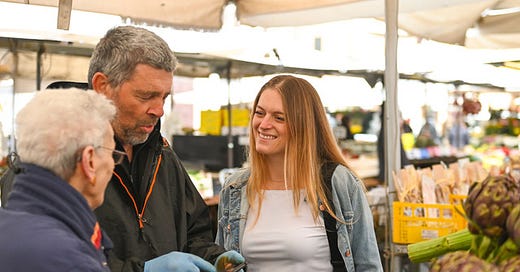




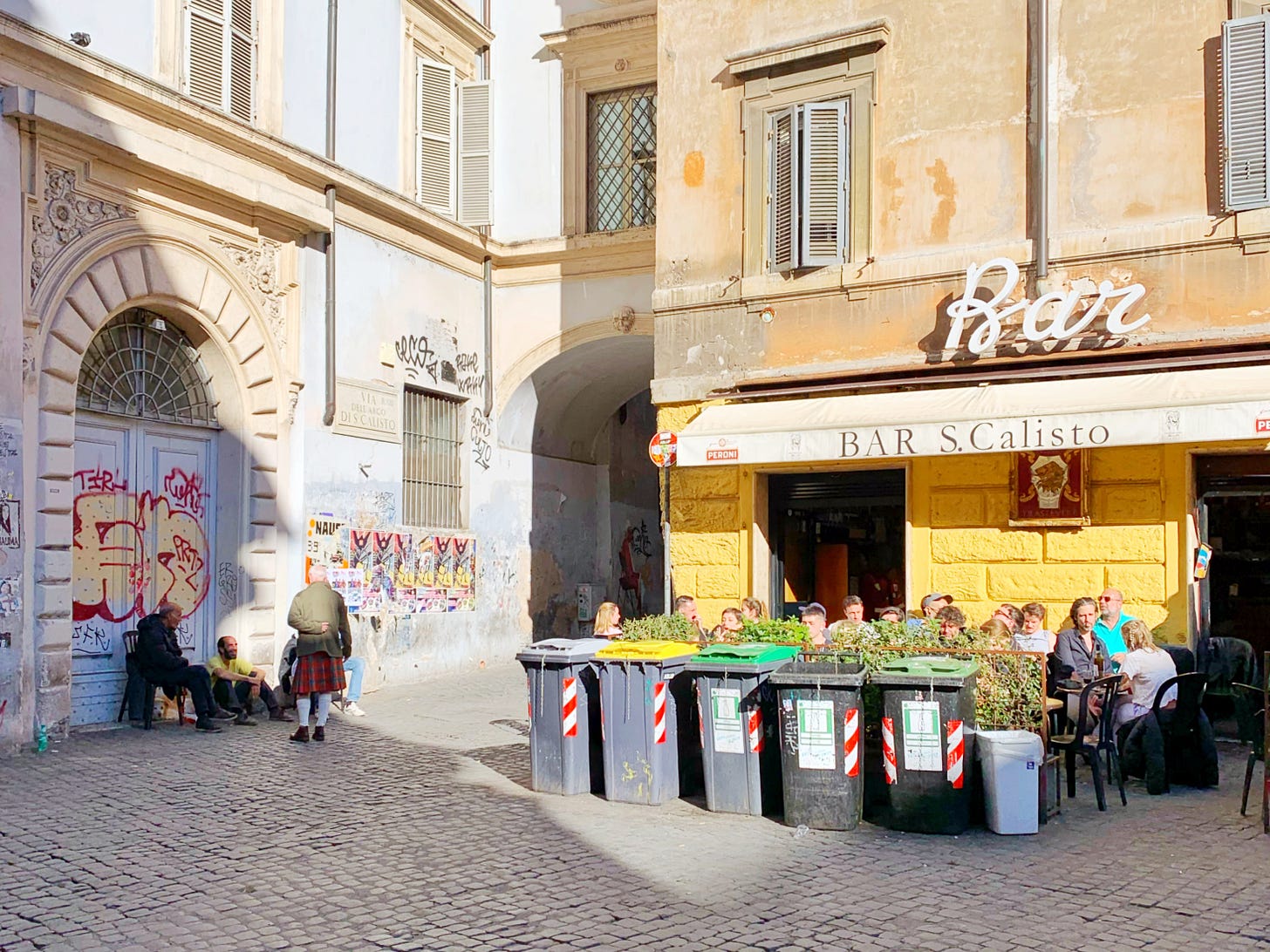
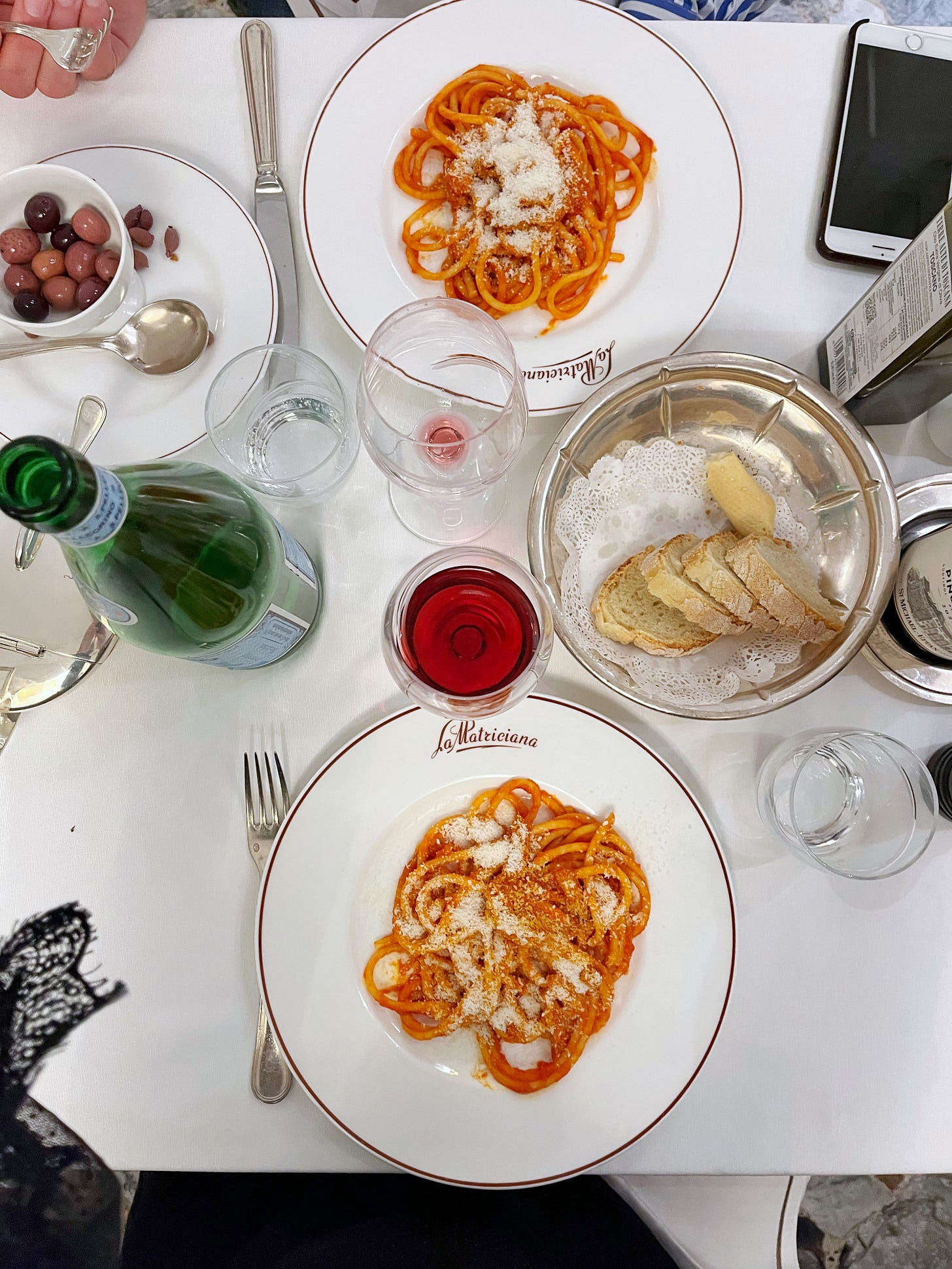
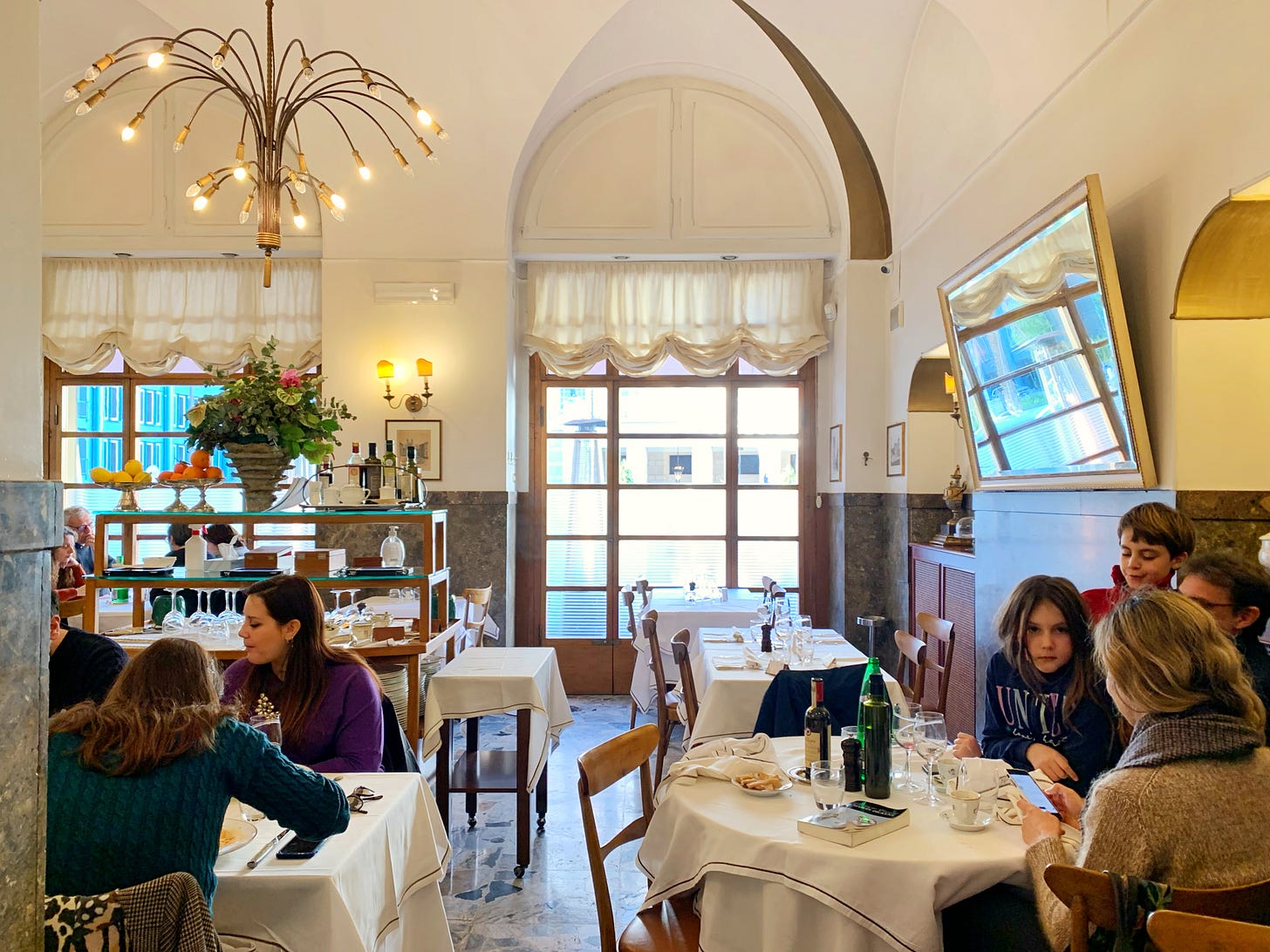
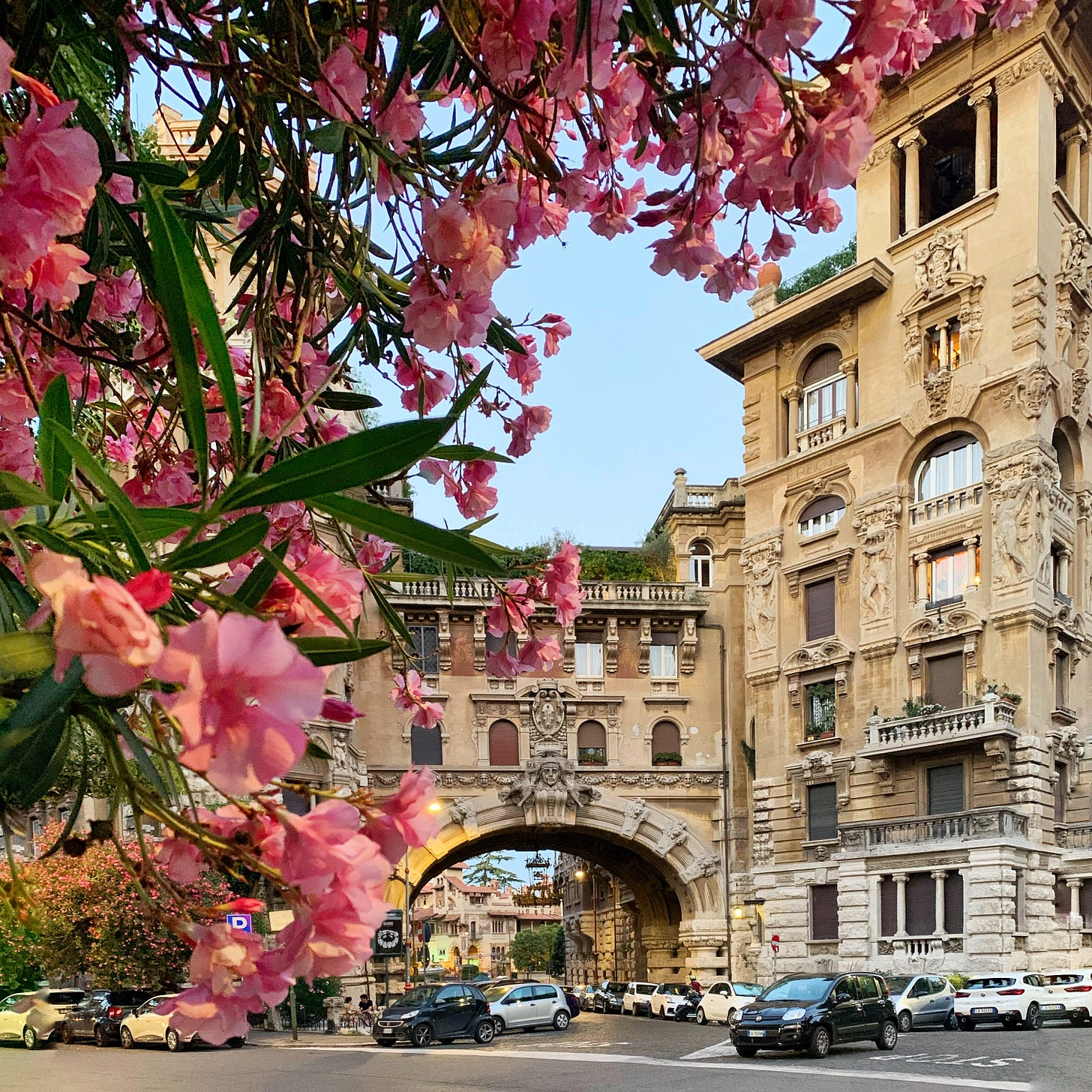
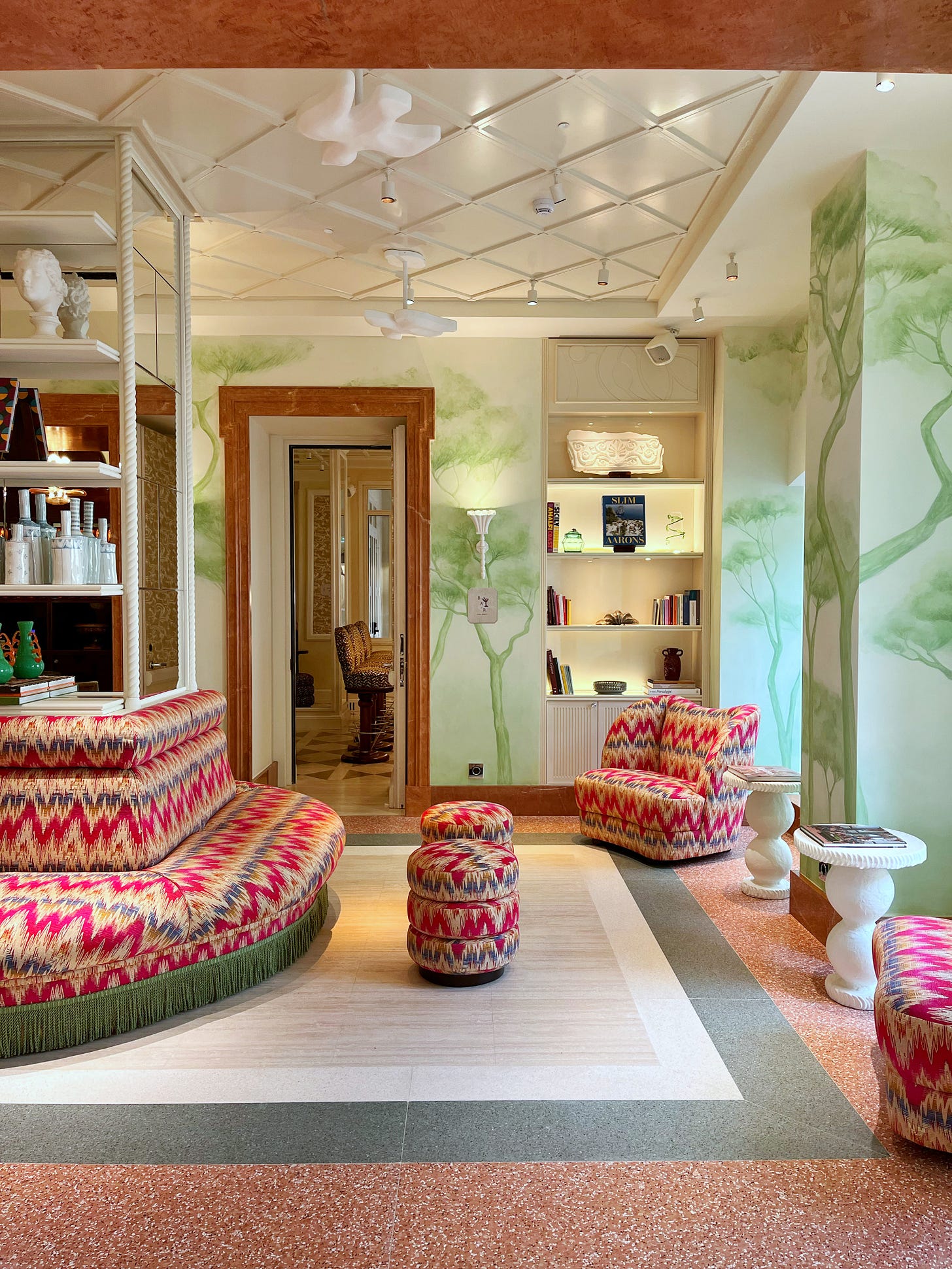
One of my favorite people on social and so loved reading this conversation 🤍
Sophie has so many wonderful recommendations! How generous of her to offer some that she usually keeps to herself. Making note of these. ☺️ She has some wonderful guides via Thatch that I highly recommend. They’ve been very helpful and her recos are so solid!